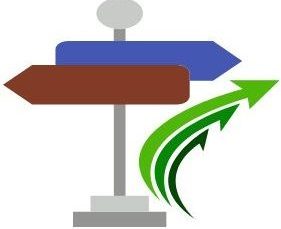A financial market is a place where securities traded for long-term and short-term purposes. The securities such as shares, debentures, bonds, commodities, currencies, and short-term instruments. Capital market and Money market are the two types of the financial market.
Likewise, a capital market is a market where different securities traded for the long term, however, in the money market instruments trade for short-term purposes. The capital market is riskier as compared to the money market and capital gain is also high.
So, the capital market is a long-term investment with the speculation of high capital gain. The capital market is more popular as compared to the money market. In this article, we provide information about the money market, its instruments, and its scope in Nepal.
Table of Contents
What is Money Market?
In the money market, a large number of debt instruments are trading between institutions and traders for the short term. Also, an individual can invest in the money market by investing in treasury bills, mutual funds, and by opening a money market account in a bank.
Normally, money market transactions are done wholesale between financial institutions and companies. The money market is safer with high liquid short-term debt. Banks, financial institutions, and insurance companies are the vehicle of the money market.
The money market plays a crucial role in the modern financial economy. In the money market, money savers lend their money to needy people and lenders get a certain interest rate as a capital gain. The needy people might be government, banks, or other companies. Short term refers to less than 1 year.
Therefore, the money market is the type of financial market where different financial and securities instruments traded with short maturities. There are a lot of financial institutions and dealers, who borrow money and lend.
The money market plays a significant role to balance the demand and supply of monetary transactions done within a period of six months to one year. Likewise, the money market sets the Cash Reserve Ratio (CRR) and Statutory Liquidity Ratio (SLR).
What are Money Market Instruments?
The tools which are operating in the money market are money market instruments. Highly liquid, safe, and discount pricing are the major characteristics of money market instruments. There are five types of money market instruments. The money market in Nepal is narrow, but worldwide it has a great market. All five types are as follows:
1. Treasury Bills
T-bonds are the government bond or securities issued by the central government with a maturity of less than one year. Treasury bills are also known as with T-Bills. It is the instrument used by the government to raise money for short-term purposes. This is the safest investment with negligible risk.
The date and the number of T-Bills are predetermined by the central government. There are three types of treasury bills which are: 91 days T-Bills, 182 days T-Bills, and 364 days T-Bills. No tax deducted at source, risk-free investment, transparency, and good return is the major advantage of T-Bills. T-Bills issued with less value than their face value.
2. Certificate Deposits
Certificate Deposits (CDs) issued by banks with certain interest rates and times. CDs used by commercial banks as a negotiable instrument. Certificate deposits issued through the promissory note. The CDs can be issued to individuals, companies, and investment companies.
Therefore, it is a fixed interest income instrument governed by the central bank. Security, high-interest rates, flexibility, and low to minimum maintenance costs are the major advantages of certificate deposits. Although its CDs sound like Fixed Deposit (FD), there are certain differences. CDs are freely negotiable instruments however, FD is not.
3. Commercial Papers
Commercial papers (CPs) will issue to meet the capital requirement of the particular company. So, CPs are the short-term debt issued by the banks or the company to finance inventories and temporary liabilities. CPs are short-term debts that have maturity no longer than 270 days.
Secured and Unsecured securities are two types of commercial papers. Therefore, the issuer fixed the amount payable to the buyer in the future in terms of liquid. So, it is a short-term debt including promissory notes with set maturity.
4. Repurchase Agreements (Repo)
In some markets, Repo also known as a sale and repurchase agreement. Repo is a collateralized loan. The central bank fixes the repo rate and uses it wisely to regulate the money supply. It is an essential tool of Monetary Policy. So, Repo is a short-term instrument, where a seller sells government security to a buyer with the agreement of repurchase. Term and open repurchase are the major types of Repo.
5. Banker’s Acceptance
Banker’s Acceptance (BAs) is a piece of paper with promising future payment guaranteed by a bank. BAs are popular within commercial banks. In BAs form, many details include the amount need to repaid, repayment date, and individual’s details to which the repayment is due. The maturity period of Banker’s Acceptance is from 30 days to 180 days.
In the international market, commercial papers, certificates of deposits, syndicated loans, repurchase agreements are the most traded money market instruments.
Conclusion:
Except for treasury bills, other money market instruments are not popular in Nepal. The money market is still very narrow in Nepal. The money market instruments like commercial papers, certificates of deposits, banker’s acceptance, and call money are not traded in Nepal.
Only Nepal Rastra Bank and commercial banks are the players in the money market of Nepal. There are no individuals and other companies involved in the money market of Nepal. The NRB and ‘A’ level banks traded T-Bills and inter-bank borrowing.
Treasury Bills are the most traded money market instrument in Nepal. T-bills issued by Nepal Rastra Bank and also regulate the money market. Treasury bills in Nepal started in 1961-62. The money market takes a huge place in the world market, but because of lack of awareness and supervision, it is still under development in the Nepalese economy. The money market’s instruments interest payments determined by the central bank in Nepal.
To develop the money market in Nepal, Nepal Rastra Bank should play a crucial role by developing different instruments, raising awareness, supervise properly, and making the market more accessible.
FAQs on Money Market in Nepal
-
What is Money Market?
Money market is the type of financial market where different financial and securities instruments traded with short maturities. The money market plays a significant role to balance the demand and supply of monetary transactions done within a period of six months to one year. Likewise, the money market sets the Cash Reserve Ratio (CRR) and Statutory Liquidity Ratio (SLR).
-
What are the instruments of money market?
Treasury Bills, Certificate Deposits, Commercial Papers, Repurchase Agreements (Repo) and Banker’s Acceptance are money market instruments.


how can we buy T-bills??